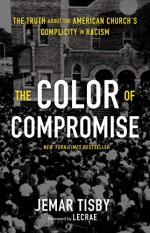
|
| Name: _________________________ | Period: ___________________ |
This test consists of 15 multiple choice questions and 5 short answer questions.
Multiple Choice Questions
1. How does Tisby categorize his book, The Color of Compromise?
(a) Biography.
(b) Historical survey.
(c) Historical nonfiction.
(d) Historical fiction.
2. What statement is NOT true of Charles Grandison Finney?
(a) He allowed Black people to join his church.
(b) He supported racial desegregation.
(c) He advocated for Black emancipation.
(d) He was an outspoken abolitionist.
3. Which war allowed Britain to expand their territory in North America in the mid-1700s?
(a) The Revolutionary War.
(b) The War of Spanish Succession.
(c) The French and Indian War.
(d) The Anglo-Spanish War.
4. What year did the Constitutional Convention take place?
(a) 1785.
(b) 1772.
(c) 1781.
(d) 1787.
5. According to Tisby, what did Christianity become for enslaved Blacks?
(a) A source of controversy.
(b) A source of outrage.
(c) A source of despair.
(d) A source of hope.
6. What religious beliefs did enslaved Blacks hold upon their arrival in North America?
(a) They practiced indigenous religions native to Africa.
(b) They had no religious beliefs of their own.
(c) They had already converted to the Christian faith.
(d) They were primarily Jewish and Islamic.
7. How many people perished during the Middle Passage?
(a) About 1 million.
(b) About 500,000.
(c) About 750,000.
(d) About 2 million.
8. Which white man married Metoaka, also known as Pocahontas?
(a) Thomas Jefferson.
(b) John Rolfe.
(c) George Washington.
(d) Benjamin Franklin.
9. In the 1800s, the global demand for which product helped fuel the north American slave trade?
(a) Cotton.
(b) Oil.
(c) Steel.
(d) Wool.
10. How many enslaved people were transported from Africa during the transatlantic slave trade?
(a) 10 million.
(b) 15 million.
(c) 5 million.
(d) 20 million.
11. Which group received additional rights after the Revolutionary War?
(a) White landowners.
(b) White women.
(c) Native Americans.
(d) Black people.
12. What was the term for secret places where enslaved Blacks met to worship?
(a) Hush arbors.
(b) Quiet lanes.
(c) Hidden chambers.
(d) Confidential gardens.
13. According to Tisby, what is required to achieve "reconciliation" (15)?
(a) Acceptance.
(b) Grief.
(c) Repentence.
(d) Anger.
14. What usually happened to enslaved people who were caught trying to escape?
(a) They were exiled.
(b) They were fined.
(c) They were hanged.
(d) They were imprisoned.
15. What was the impact of chattel slavery on Black families?
(a) It usually kept families intact.
(b) It allowed married couples to free their children.
(c) It frequently broke up families.
(d) It kept couples together, but separated children.
Short Answer Questions
1. In the seventeenth and eighteenth century, which regions received the largest number of enslaved persons?
2. How many people attended the Cane Ridge Revival?
3. What was the Haitian Revolution?
4. What was the term used for the religious movement that emphasized a personal encounter with God?
5. Which of the following is NOT a social issue the Benevolent Empire sought to address?
|
This section contains 461 words (approx. 2 pages at 300 words per page) |

|




